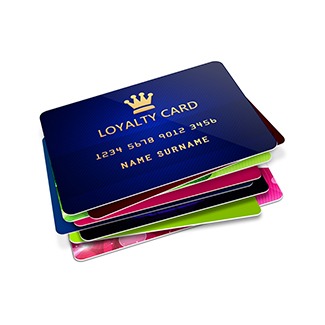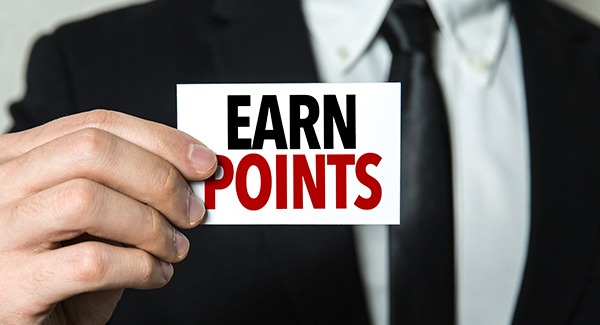A friend said to me long ago, “If it’s free, it’s for me!”
That stuck with me for many years to the point of scouring the free section of Craigslist regularly. Eventually, I ended up with a nice stockpile of junk.
As time went on, someone asked me if I was ever going to purchase a record player for all the free vinyl that I had amassed. I replied that maybe I would one day, but in the meantime, I couldn’t pass up all those free records.
Eventually, I started to simplify my treasures, but I did keep a sizeable stack of free firewood in my yard.
Just like that firewood and all those records, we often simply take things that are free but we’re willing to pay for things that have immediate value to us, and we have a vested interested in those items. Let’s talk about how that applies to loyalty program membership.
Bring Out Your Duster for Those Old Vinyl Records and Loyalty Cards
From old furniture to firewood to random gadgets, I collected it. What did it all have in common? I never actually used any of it.
Maybe that’s why the average household belongs to 29 different loyalty programs, but only actively participates in 12 of them.
It seems that when people aren’t invested in stuff, they’re not as likely to use it. People’s wallets and key chains are heavy with free loyalty cards, but just like my vinyl records, they just collect dust.
I eventually started cleaning out the house and the garage just like consumers did with their loyalty program memberships. According to that same survey, 78% of U.S. consumers are retracting from loyalty programs. Most of that withdrawal is attributed to customers flocking to the most evolved programs that are more aligned to their expectations and needs. Rather than waste their time on cookie-cutter loyalty programs with large-scale audiences in mind, they are more interested in programs that are built with their needs at the forefront.
Free Versus Fee: What’s Right for Me?
Very simply put, a free loyalty program allows any consumer to participate without any cost to them. By design, the benefits must appeal to the widest of audiences, so there really isn’t any customization.
These programs are not tailored to individual consumers.
On the other hand, fee-based loyalty programs require payment to join and usually recurring fees to keep membership active, but they allow brands to tailor the experience and add the most value for members.
Amazon Prime is probably the best example of a successful paid premium loyalty program.
There’s no doubt that free programs attract a much wider audience than paid loyalty programs and there is little at stake when signing up. If paid programs appeal to a much narrower audience, then how do they appeal to retailers?
Simply put, the quality of the audience is much higher because people that are willing to pay for a program that adds a lot of value to their lives are much more committed to the brand and therefore engage much more regularly.
The Risk of Free Loyalty Programs
On the surface, minimal risk comes to mind when thinking about free loyalty programs. From the perspective of the consumer, there is no need to spend to join. Not much risk is taken on the retail end, either.
If we look a little deeper however, there is a lot of underlying risk in a free program. The biggest risk that companies have today is not evolving their loyalty programs with their customers, which can have the opposite effect of loyalty: indifference.
For example, the typical grocery store loyalty program does not reward loyalty. It rewards card ownership. Consumers are given discounts on the commodities they would buy anyway, and there is no incentive to only shop with one grocery store.
A lot of people just sign up for cards at every grocery chain in their area. I am probably their worst type of customer. I don’t have any cards. I simply tap the “Forgot Your Card?” button at checkout so the chains aren’t even gathering any data about me.
In other cases, traditional free loyalty programs have simply trained consumers to wait for discounts. This has earned these programs the reputation of margin killers. For example, I do not shop at Kohl’s unless I receive a discount coupon in the mail. It gets even worse. Kohl’s sends out 10%, 20%, and 30% off coupons.
Guess which discount is the only one I use now? There’s that discount training at work. I’m not the only one.
Do you have any of the infamous blue 20% Bed, Bath, and Beyond coupons stashed away?
According to this Fortune article, the retailer is blaming a dip in profits on widespread coupon usage. They’ve recently been testing a new paid premium loyalty program which aims to generate new revenue, boost customer loyalty, and improve its margins, while helping it better compete with Amazon Prime.
This Paytronix comparison shows that there is also a higher propensity for fraud and a longer time to profitability due to gains only because of incremental transactions. The profitability depends solely on a massive number of members and even then, the frequency at which they engage is no match for that of a paid program.
The Rewards of Paid Loyalty Programs
Charging a program fee creates a steady stream of high-margin revenue upfront which is not only beneficial in of itself, but also allows brands to give members more value immediately rather than forcing them to accumulate rewards over time.
Although a tougher sell to an audience, there are a bunch of beneficial outcomes for businesses according to this article by Paytronix:
- Earning a faster ROI due to cash being received upfront.
- Attracting committed consumers.
- Qualifying members and obtaining quality data.
- Offering attractive, more generous rewards using the membership fees as a source of funds.
In all honesty though, would the selling part really be that tough if your brand was offering something valuable and unique to a narrower audience that already has an interest in what you do? Probably not.
To be fair, free loyalty programs are easier to implement and manage in some areas. For example, they do reduce the need for special financial accounting measures.
However, when we build a custom premium loyalty program for a partner at Clarus, we also include complete accounting services as an ongoing service, so this becomes a nonissue.
Will People Pay?
The answer is yes.
A study by LoyaltyOne suggests that the majority of consumers, especially millennials, will gladly sign up for paid loyalty programs as long as the rewards were valuable enough. Here are some key takeaways from the study:
- 62% of respondents said they’d consider joining a fee-based rewards program if their favorite retailer offered one.
- This number was even higher among millennials with 75% of 18-24 year-olds and 77% of 25-34 year-olds saying they’d consider joining a fee-based rewards program.
- 65% said customer rewards are worth paying for if relevant to their needs.
- Millennials, again, rated this even higher with 79% of 18-24 year-olds and 76% of 25-34 year-olds saying relevant rewards are worth paying for.
- Nearly half (47%) said rewards in fee-based programs are better than rewards in free programs
- A significantly larger number of millennials – 61% of 18-24 year-olds and 54% of 25-34 year-olds – said fee-based rewards are better.
It’s important to differentiate though. The study also found that found that 49% of overall respondents said all rewards programs seem alike and that perception was even stronger among millennials.
Marketers need to think long and hard about what differentiates their brand from the competition and focus the program benefits around that. Let’s look at the GameStop PowerUp Rewards paid loyalty program.
Forbes says here that the company uses the data collected from program members to drive personalized recommendations and suggested trade-in values for games.
Consumers are very willing to pay for program benefits if they perceive value.
Paid Loyalty For The Win
It’s clear that we are seeing a significant shift in what consumers want. Paid premium loyalty programs are important for the future of customer-facing industries.
Although free loyalty programs have been used in the past to engage larger customer bases, paid loyalty programs are now not only accepted by consumers, but embraced if they provide enough value.
The businesses that appeal to this new loyalty revolution will be the ones that will reap the rewards that come with happier and more engaged customers.
A free program may seem easier to implement upfront, but the rewards aren’t as great in the long run. If you would like to discuss any of the nuances of a paid premium loyalty program and how Clarus handles them, please contact us. We build and manage these types of programs turnkey every day, so we’d be happy to chat.
On a final note, in case you were wondering, the free firewood is still sitting in my yard and it’s now home to a nice colony of termites. Ironically enough, whenever I go camping now, I just buy new wood and I always make sure to burn all of it even if there is extra left. Why? Well, I like to use what I pay for.



